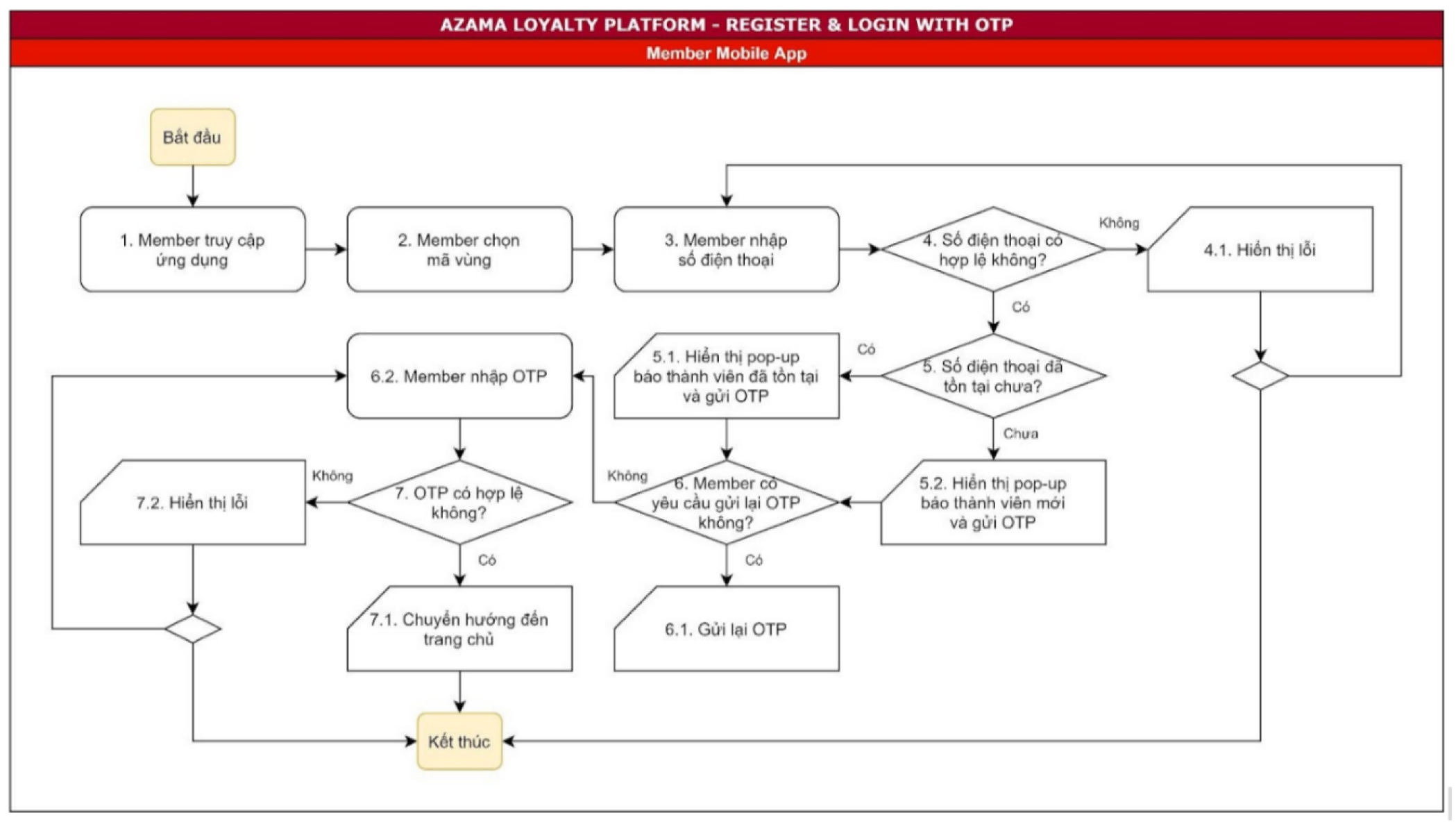Azama Loyalty

Azama platform is a world of exclusive benefits, rewards, and privileges that go beyond traditional loyalty programs.
Learn more: UniWorld Vietnam JSC/ News Position: UI/UX Designer Year: 2022
1. Overview
Azama is a Customer Loyalty platform that develops a marketplace where buyers and sellers, as well as the supply and demand sides, can communicate, connect, and conduct business with one another.
2. Objectives
Build 4 platforms to serve many types of users.
– The App for end customers to collect reward points after the purchase transaction.
– The App/Website for merchants to manage their stores, campaigns, customers, transactions history…
– The Website for operators to manage owner’s merchants.
3. Strategy
Company vision and mission
– Vision: Azama wants to create products that are fit for the sharing economy. To do this, Azama makes use of the resources on digital platforms and connects users with the products and services of companies that will best meet their needs.
– Mission: By utilizing a common resource, we help firms increase their competitive advantage. To assist businesses in developing effective marketing strategies and Loyalty programs, we gather and analyze data. As a result, businesses can grab chances.
Company core value
The development of Azama by a young, vibrant, energetic, and experienced team in the domains of technology and marketing will assist companies in taking a practical approach to building a connection and trust with customers.
Product team setup
Business Owner, Project Manager, Product Owner, Product Designer, Business Analyst, Developers, Testing.
4. User Personas
Azama worked as a marketplace, connecting buyers and vendors. There are three different types of users who will use Azama.
Members: the end-users of the App who access it to use bonus points.
A vibrant, eye-catching mobile app that attracts customers to visit and redeem
Merchants: includes Store Staff and Store Owner. To manage their stores, members, points, campaigns, and redemption transactions, they use the Web and an App.
Simple, fast, good navigation for merchants to use to manage all their stores
Operators: access the Web to manage all the merchants who have signed up for the Azama system.
Get continuously changing statuses, and completely monitor merchants so they can be supported as soon as necessary.
5. Design Process
Market Problem
Creating a loyalty program is challenging, especially for SMEs with limited finance and technical infrastructure. For SMEs to create a comprehensive loyalty solution, a minimum requirement is an admin website and an App or Web for end users.
The redemption systems could lack security, liquidity, and exchange…
Users are frequently allowed to download applications and register for accounts on businesses that build their own customer loyalty.
If a customer buys 100 products or services from different businesses that offer loyalty programs, will they need to download up to 100 applications to their phone and set up 100 accounts? As a result, users would rather skip loyalty points than have to install the app.
User Problem
Managing multiple Apps at a time.
After customers redeem points, the loyalty systems are not immediately and accurately updated.
The calculated points make customers feel unsupported.
Most loyalty points expire after a certain amount of time, or customers must accrue enough points to exchange them for something of value (be it gifts or preferential services, membership tier).
While some customers merely make a few purchases and collect a limited number of points. Users might feel uninterested or even do not know about loyalty programs as a result.
Businesses still need to maintain the operation and maintenance of the loyalty system even when outsourcing it (server, database…). Because there will be situations when a loyalty program is unnecessary. So to maintain this resource would be wasteful. Or times when traffic spikes – promotions, Black Friday for example.
UX Writing
I was in charge of 98% of the content across all Azama platforms. The BA backed up by reviewing and modifying the content if needed. I tried to keep the words shorter without losing their meaning’s clarity so that users could make decisions.









6. Outcome
This project is not just a freelance job, it is a period that helps me to understand the value of creative freedom.
Here are 3 things I get when joining in.
1. Creative Freedom is more important than I may think
I read the sentence ”Every work of art, visual or written, has a natural subjective element to it“. In this project, everyone in the team focuses on their tasks as good as possible. They respect other people’s positions and skills.
Feedback frequently highlights issues that the designer has missed. The design will then be filtered and, if necessary, adjusted.
I like working with the Azama team because of the great teamwork. I sense the freedom to explore my creativity, think through concepts, and come up with a better visual interpretation and illustration of the concepts.
2. The power of the SRS document with the Designer
SRS documents are occasionally viewed as developer-only documents. An SRS, however, can go beyond this and turn into a manual for marketing executives, stakeholders, design teams, and even users.
An SRS, in my opinion, is a great tool for articulating such specifics. Thus, I can understand what to expect from the outcomes. Also, obtain project insights via SRS to align the design with the use cases.
3. Maintaining branding consistency
The biggest problem in designing for multiple platforms is striking a balance between brand consistency and functionality with each platform’s own standards.
I believe that the three different Azama user groups can interact with the apps and websites without having to spend much time figuring out how to maintain a unified design across platforms.
This uniform presentation shortens the training time for newly discovered products and services by allowing users to recognize elements and predict the next action.